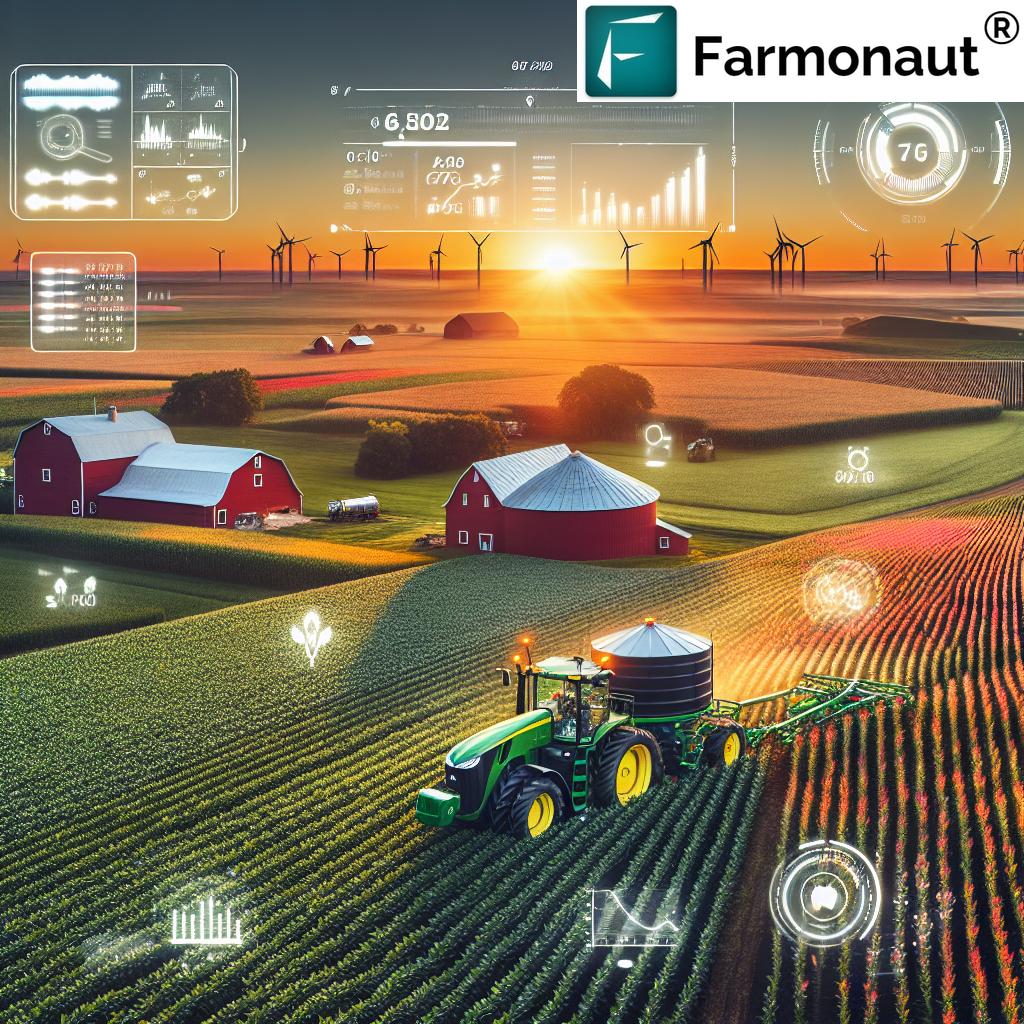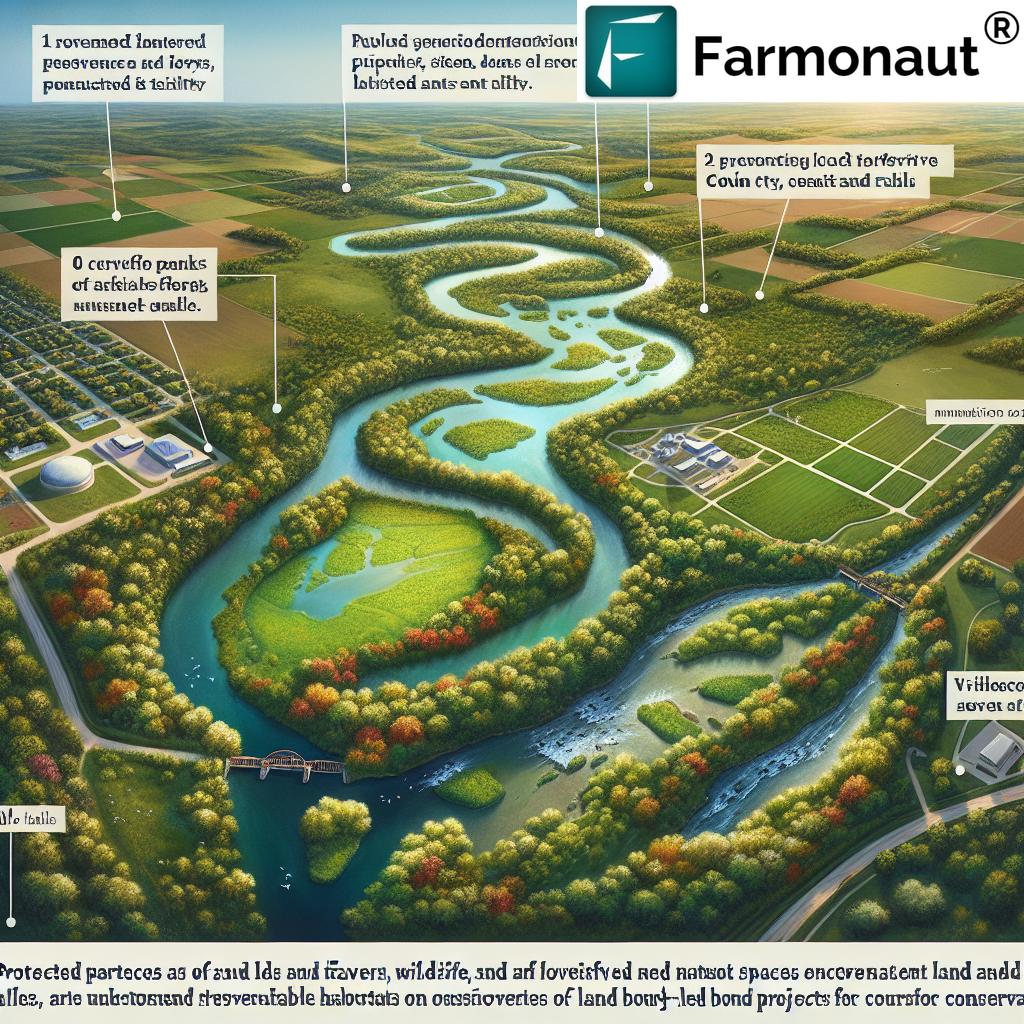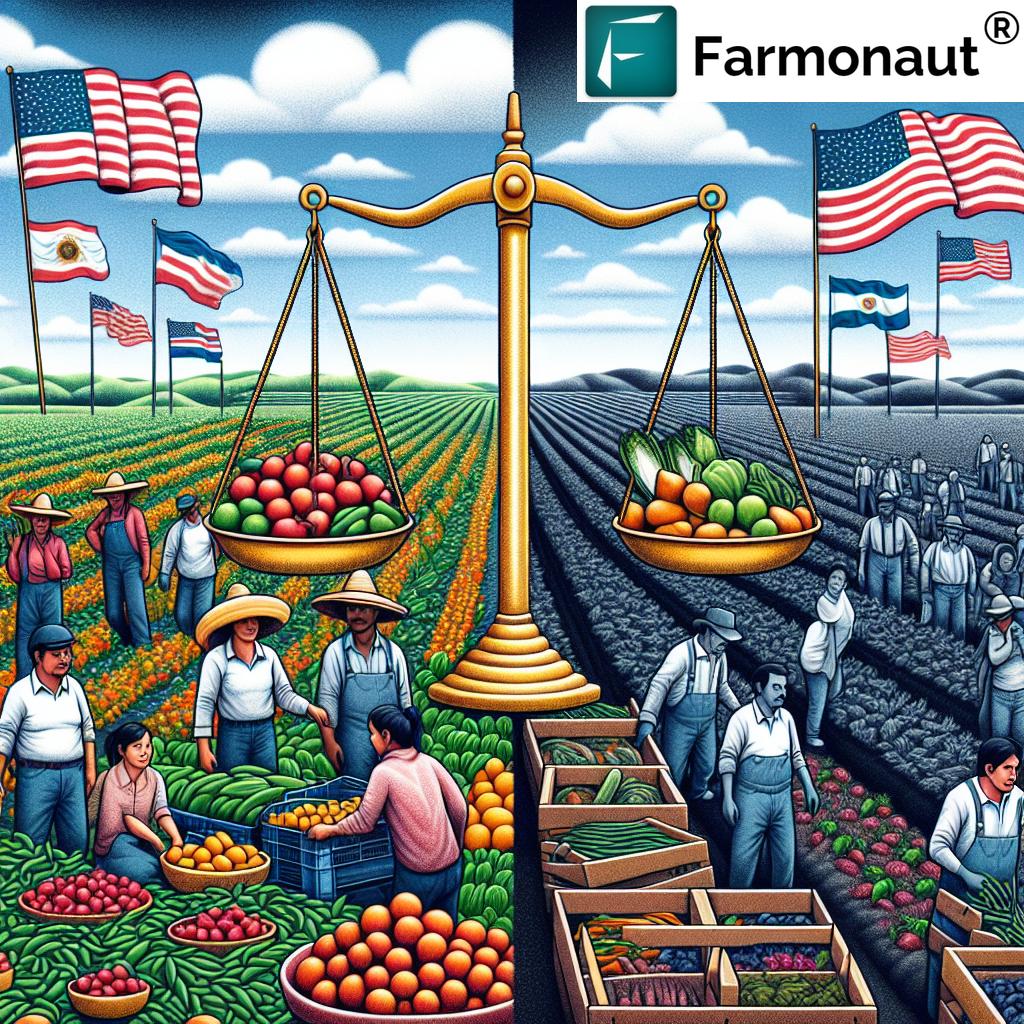2025 Emergency Commodity Assistance Program Relief Guide: Direct Payments and Financial Relief for Agricultural Producers
Program Overview: Emergency Commodity Assistance Program (ECAP)
The 2025 Emergency Commodity Assistance Program (ECAP), initiated by the U.S. Department of Agriculture (USDA), stands out as a timely and robust measure to provide direct payments and financial relief for agricultural producers grappling with rising input expenses and falling commodity prices. Announced on March 18, 2025, ECAP is designed as a direct economic assistance program to help stabilize farm income and ensure sustained operations for farmers and ranchers. With a total allocation of up to $10 billion in direct payments, the program’s primary mission is to cushion agricultural producers against sudden shifts in the market, increased production costs, and unexpected farming challenges.
Recognizing the persistent headwinds facing U.S. agriculture—including volatile market prices, rising input costs, and weather-related setbacks—the USDA has structured ECAP to deliver real, usable financial support quickly. The program offers targeted relief by establishing clear eligibility criteria, streamlined application processes through the Farm Service Agency (FSA), and transparent payment rates for eligible commodities.
These guidelines aim to support producers in key states like Iowa, Illinois, and Texas, ensuring relief reaches the agricultural heartland.
Emergency Commodity Assistance Program Eligibility Requirements
For agricultural producers seeking aid through ECAP, understanding eligibility criteria is essential. The emergency commodity assistance program sets forth compliance and documentation needs to ensure that payments support agricultural producers directly impacted by input costs and commodity price fluctuations.
Key Eligibility Criteria for ECAP
- Active Engagement in Farming: Applicants must be actively engaged in farming activities (including ranching or forestry, where specified) during the 2024 crop year.
- Interest in Input Expenses: Applicants must demonstrate a vested interest in input expenses for a covered commodity—meaning the producer must share in production costs.
- Acreage Reporting: Producers must report acreage of eligible commodities (both planted acres and prevented planted acres) to the Farm Service Agency (FSA) using Form FSA-578, Report of Acreage. Correct and timely reporting is crucial for payment calculation.
- Notice of Loss for Prevented Plant Acres: If acres were prevented from being planted due to qualifying natural disasters, a Notice of Loss (Form CCC-576) must be filed with FSA. This form substantiates your claim for payment on prevented planted crops.
- Submission Deadlines: Producers who have not submitted 2024 acreage reports or Notice of Loss documentation must do so by August 15, 2025.
In summary, eligibility requires: active farming engagement, proper form submission, and timely reporting of eligible commodities on both planted and prevented acres. These requirements help ensure direct payments reach those facing genuine market and production challenges.
Eligible Commodities and Payment Rates: What Does ECAP Cover?
The ECAP program covers a diverse range of eligible commodities crucial to the U.S. food and agricultural sector. Each commodity has a specified payment rate per acre, reflecting its unique market conditions, input costs, and production risks. Detailed below are the primary ECAP-eligible commodities and their corresponding per-acre payment rates for the 2024 crop year:
- Wheat: $30.69 per acre
- Corn: $42.91 per acre
- Sorghum: $42.52 per acre
- Barley: $21.67 per acre
- Oats: $77.66 per acre
- Upland Cotton & Extra-long Staple Cotton: $84.74 per acre
- Long & Medium Grain Rice: $76.94 per acre
- Peanuts: $75.51 per acre
- Soybeans: $29.76 per acre
- Dry Peas: $16.02 per acre
- Lentils: $19.30 per acre
- Small Chickpeas: $31.45 per acre
- Large Chickpeas: $24.02 per acre
- Canola: $31.83 per acre
- Crambe: $19.08 per acre
- Flax: $20.97 per acre
- Mustard: $11.36 per acre
- Rapeseed: $23.63 per acre
- Safflower: $26.32 per acre
- Sesame: $16.83 per acre
- Sunflower: $27.23 per acre
These rates ensure robust financial relief for agricultural producers challenged by increased input costs, reduced crop prices, and sector volatility. Payment rates may be adjusted in future years depending on Congressional funds and annual market analysis.
2025 Eligibility and Payment Summary Table
| Commodity | Estimated Payment Rate per Acre | Payment Cap per Producer | Eligibility Criteria | Application Window |
|---|---|---|---|---|
| Wheat | $30.69 | $125,000 / $250,000 * |
|
Mar 19 – Aug 15, 2025 |
| Corn | $42.91 | $125,000 / $250,000 * |
|
Mar 19 – Aug 15, 2025 |
| Soybeans | $29.76 | $125,000 / $250,000 * |
|
Mar 19 – Aug 15, 2025 |
| Upland/Staple Cotton | $84.74 | $125,000 / $250,000 * |
|
Mar 19 – Aug 15, 2025 |
| Rice (Long & Medium Grain) | $76.94 | $125,000 / $250,000 * |
|
Mar 19 – Aug 15, 2025 |
| Peanuts | $75.51 | $125,000 / $250,000 * |
|
Mar 19 – Aug 15, 2025 |
| Small & Large Chickpeas | $31.45 / $24.02 | $125,000 / $250,000 * |
|
Mar 19 – Aug 15, 2025 |
* Standard cap: $125,000; Increased cap: $250,000 for producers with ≥75% average gross income from farming, ranching, or forestry (Form CCC-943 required).
How to Apply for Crop Assistance: Step-by-Step ECAP Application Process
The application process for ECAP is designed to be as user-friendly as possible. Producers can apply for crop assistance through several convenient channels. To ensure your application is processed and payments are disbursed promptly, follow these best practices:
-
Review Eligibility and Gather Required Forms:
- Ensure your acreage and commodity details are reported for the 2024 crop year using Form FSA-578.
- For prevented planted acres, file Notice of Loss (Form CCC-576) with your local FSA office.
-
Look for a Pre-Filled ECAP Application:
- The Farm Service Agency (FSA) is sending pre-filled applications to eligible producers who had reported 2024 acreage by March 10, 2025. If you did not receive a pre-filled application, downloads are available on the FSA website.
-
Choose Your Submission Method:
- In-Person: Visit your local FSA county office for direct assistance and submission.
- Electronically: Submit your application online via the official FSA ECAP portal.
- By Fax: Fax your forms and documentation to the office address listed in your location’s FSA directory.
-
Meet the ECAP Application Deadline:
- August 15, 2025 is the final day to submit your application and any missing acreage or loss reports for 2024.
-
Monitor Your Application Status:
- Contact your local FSA office or check the online status portal for updates on your ECAP application.
Pro Tip: Double-check all entries on the FSA-578 and CCC-576 forms to ensure they match your 2024 crop records. Mismatches or incomplete documentation may delay processing or result in payment reductions!
Available Tools to Streamline ECAP Applications:
For real-time crop area estimation and effortless acreage reporting, precision tools like Farmonaut’s satellite-based solutions can be invaluable! Our technology helps ensure reporting accuracy for your planted and prevented planted acres, making your ECAP application process smoother and more reliable.
Farmonaut Tools for Farm Management: Empowering Producers for Precision Reporting
Farmonaut is dedicated to empowering producers with affordable, accessible, and advanced farm management tools to help with all aspects of the 2025 Emergency Commodity Assistance Program.
Our Platform’s Services for Accurate Acreage & Crop Reports
- Satellite-Based Crop Health Monitoring: We provide field-level, real-time satellite imagery (NDVI, moisture, etc.) to monitor crop development, detect stress, and record planted versus prevented planted acres for reporting and compliance.
- AI-Based Advisory System: Jeevn AI delivers instant, remote crop diagnosis, weather forecasts, and tailored farming advice to optimize yields and reduce unnecessary input costs.
- Blockchain Traceability: Through our product traceability solution, trace farm produce from field to fork, simplifying supply chain audits and compliance documentation.
- Carbon Footprinting: Calculate carbon emissions and environmental impact on your operation for voluntary programs or regulatory compliance.
- Fleet & Resource Management: Track and optimize farm machinery usage and reduce input expenses, a crucial factor in operational profit margins.
- Large-Scale Plantation Management: For plantation and large-area field mapping, our scalable Farmonaut Agro Admin App supports multi-farm coordination, batch reporting, and advanced analytics required for FSA and USDA programs.
- Crop Loan & Insurance Verification: Our satellite-based verification platform helps expedite crop loan and insurance evaluations, reducing fraud and improving access to relief funds.
- Custom API Integration: Easily embed Farmonaut’s satellite and weather data API for programmatic tracking and reporting, with full developer documentation available.
All Farmonaut solutions are accessible through web, Android, iOS app, or API—empowering producers to efficiently comply with ECAP’s acreage and crop reporting requirements.
ECAP Payment Distribution: Calculation, Process, and Payment Timeline
Direct payments under the 2025 Emergency Commodity Assistance Program are calculated based on the eligible acreage reported by each producer. The process is structured to prioritize timely relief while safeguarding the program’s $10 billion cap for nationwide distribution.
How ECAP Payments Are Calculated and Distributed
- Acreage Calculation: Producers submit acreage data for eligible covered commodities (including both planted and prevented plant acres) for the 2024 crop year.
- Total Payments: Initial payments represent 85% of the total calculated relief for each applicant (based on per-acre rates and eligible acres).
- Second Payment Wave: If national program demand leaves funds remaining, the FSA may release the final 15% of calculated payment for qualifying producers after the initial disbursement.
- Distribution Methods: Approved payments are disbursed via direct deposit, mailed check, or other methods specified during application.
This payment structure allows the program to adapt to total nationwide demand and avoid exceeding the $10 billion cap, thus ensuring financial relief for the maximum number of agricultural producers.
- If total claims exceed program funding, payments may be prorated to remain within the budget.
Payment Limitations for Producers: Ensuring Equitable Distribution of Funds
ECAP puts in place payment limitations for producers to encourage fair and balanced assistance allocation. There are two primary thresholds based on the proportion of average gross income derived from farming, ranching, or forestry over the relevant period.
- Standard Payment Limit: $125,000 per legal entity, for applicants with less than 75% of their average gross income from farming, ranching, or forestry in the relevant years.
- Increased Payment Limit: $250,000 per legal entity, for applicants with at least 75% of average gross farm income from qualifying activities. Form CCC-943 must be filed to verify eligibility for this higher cap.
Note: These caps apply in aggregate to all commodities and all acres per producer per crop year, regardless of the number of eligible crops claimed.
For further details, see the official ECAP FSA resource page.
USDA Emergency Relief Program: Impact, Trends, and Importance for 2025
The 2025 Emergency Commodity Assistance Program is an integral part of the USDA’s larger agricultural disaster relief framework. It aims to:
- Stabilize and support farm income for U.S. agricultural producers facing volatile commodity prices and increased input costs.
- Ensure food supply chain resilience by preventing farm closures and supporting ongoing production.
- Mitigate the economic impacts of market and environmental challenges on rural communities, preserving jobs and livelihoods in agricultural regions.
- Encourage long-term investments in precision agriculture and innovative farm management technologies.
Why ECAP Matters:
Current trends indicate rising input expenses (fertilizer, fuel, labor) and erratic commodity prices worldwide, leading to compressed margins for U.S. producers. Direct payments to farmers via ECAP mitigate short-term hardship and create space for operational adaptations, such as adopting new sustainability measures or precision agriculture — such as those available through Farmonaut’s platform.
Industry Insight:
Farm support programs like ECAP not only provide emergency relief but also act as catalysts for efficiency and sustainability upgrades. By integrating support programs with precision reporting and operational technologies, producers can better qualify for aid today and future-proof their operations against tomorrow’s challenges.
Did you know? Our platform helps meet reporting requirements and contributes to resource optimization, sustainability, and risk reduction for modern farms.
Farmonaut Subscription Options for Precision Agriculture
To further streamline regulatory compliance, reporting, and general farm management, we offer flexible Farmonaut subscription packages for individual producers, cooperatives, and large agribusinesses. Choose the plan that fits your acreage, update frequency, and monitoring scale:
All plans include real-time field imaging, crop health alerts, and API access for precision farming.
FAQ: 2025 Emergency Commodity Assistance Program
What is the ECAP and who is eligible?
The Emergency Commodity Assistance Program (ECAP) is a federal agricultural disaster relief program providing direct payments to help producers recover from lost income due to increased input costs and lower commodity prices. Eligibility requires active engagement in farming, interest in input expenses, and accurate acreage reporting for covered commodities using FSA forms. Producers must have reported acres for the 2024 crop year—including prevented planted acres.
When is the deadline to apply for ECAP assistance?
All ECAP applications and required acreage/loss reports for the 2024 crop year must be filed with FSA by August 15, 2025.
How much relief can a single farm operation receive?
Standard cap: Up to $125,000 for most operations. If a producer can demonstrate that at least 75% of their average gross income is from farming, ranching, or forestry, the cap rises to $250,000 (Form CCC-943 required).
Which commodities are covered under ECAP?
ECAP covers wheat, corn, soybeans, cotton (upland and staple), rice, peanuts, oats, barley, sorghum, dry peas, lentils, small/large chickpeas, canola, crambe, flax, mustard, rapeseed, safflower, sesame, and sunflower. Payment rates are listed in the program guidelines and the summary table above.
What forms and documentation are required?
Form FSA-578 (acres/crop reporting) and Form CCC-576 (notice of loss) for prevented planted acres. To request the higher payment limit, file Form CCC-943. All forms must be submitted to your local FSA office.
Can Farmonaut help me with ECAP acreage reporting or documentation?
Absolutely! Our satellite-based monitoring platform is designed to help producers collect, validate, and organize accurate acreage and crop health data, ensuring smoother ECAP application processes and compliance with USDA program requirements. Easily access these tools through our Farmonaut app.
Where can I access real-time advisory, carbon tracking, and traceability tools?
- For personalized farm advisory: Jeevn AI system via the Farmonaut app
- For carbon footprint tracking: Farmonaut Carbon Footprinting
- For supply chain traceability: Farmonaut Traceability Solution
Is API access available for automated farm reporting?
Certainly! Developers and organizations can access our satellite data API for automated crop and resource reporting at Farmonaut API. See the full API documentation for integration guidelines.
Conclusion: Secure Your Farm’s Future with ECAP and Precision Management
The 2025 Emergency Commodity Assistance Program is a pivotal pillar in the USDA’s commitment to supporting U.S. agricultural producers amid rising production costs and shifting market conditions. With clear crop year eligibility requirements, transparent payment rates, and an expedited application procedure, ECAP delivers the necessary relief for farms across America’s heartland and beyond.
Producers are encouraged to fully leverage this agricultural disaster relief program. Ensure all acreage is reported, meet the listed deadlines, and carefully track your application’s progress with the FSA. Incorporating innovative farm data management—such as the precision solutions available via the Farmonaut platform—can further boost your readiness and compliance for this and future USDA programs.
For every challenge the agriculture sector faces in 2025, the tools and support are available—act now to secure your operation’s vitality for the seasons ahead.
Quick Links:
- Web App: Launch Farmonaut Platform
- Android App: Download from Google Play
- iOS App: Download from App Store
- API Access: Access Farmonaut API – API Developer Docs
- Traceability: Farmonaut Blockchain Traceability Solution
- Carbon Footprinting: Farmonaut Carbon Footprinting (Sustainability Analytics)
- Crop Loan and Insurance Verification: Farmonaut Crop Loan & Insurance Support
- Large Scale Management: Farmonaut Agro Admin App
All the best with your applications—and here’s to a resilient harvest season in 2025 and beyond!


















